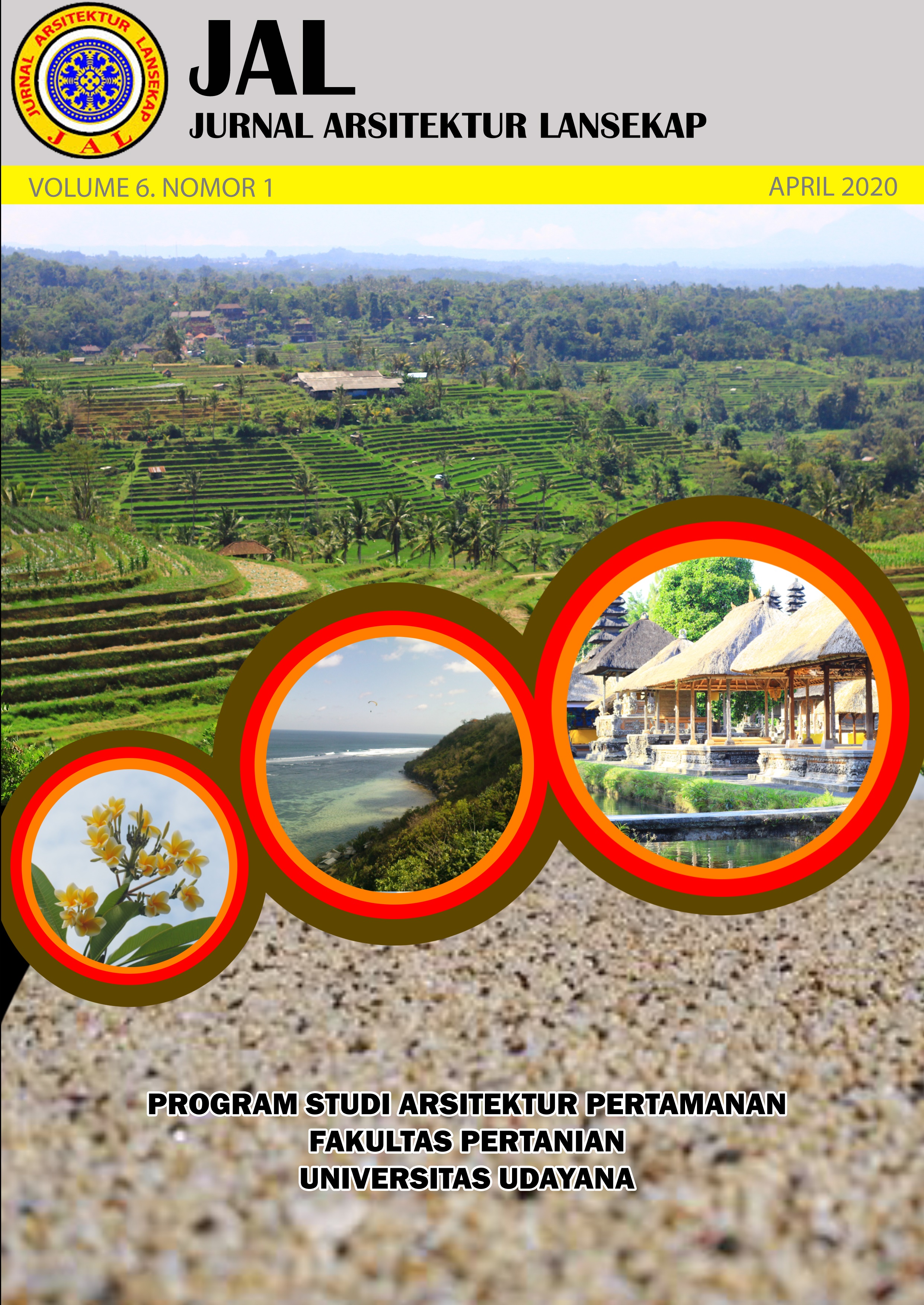Manfaat visual keberadaan hutan kota Padang Golf Halim
Abstract
Golf course landscape is a form of green open space. Besides comprising a game area, the golf course landscape also has a buffer area that can be categorized as an urban forest. Halim Golf Course is one of the golf courses in Jakarta which has a non-game area in the form of urban forest. Studies on the value of the visual benefits of golf courses are rarely conducted. This study aims to determine the visual benefits of urban forest of Halim Golf Course. The method used is the assessment of visual quality with the SBE method and impression evaluation with the semantic differential method. The results obtained show that urban forests in the form of golf courses generally have aesthetic value. In addition, urban forests that are neatly arranged and not too dense are preferred.
Downloads
References
Dahlan, E.N. 2004. Membangun kota kebun (garden city) bernuansa hutan kota. Penerbit IPB Press, Bogor.
Dewi, E.R. 2014. Evaluasi pemahaman pengetahuan kualitas dan pemeliharaan lapangan golf pada departemen golf operasional Imperial Klub Golf di Lippo Village Tangerang. Jurnal OE, 6 (3):309-326.
Dlukha, S., S. Wardiningsih, Y. Febriani, R.M. Syahadat, dan P.T. Putra. 2017. Pemeliharaan hazard di Padang Golf Matoa Nasional, Jakarta Selatan. Buana Sains, 17 (2):115-124
Handy, W.T. 2013. Pengelolaan pemeliharaan lanskap kawasan Padang Golf Halim Perdanakusuma,
Jakarta Timur. Institut Pertanian Bogor, Bogor.
Irwan, Z.D. 1997. Tantangan lingkungan dan lansekap hutan kota. Penerbit PT Pustaka CIDESINDO, Jakarta.
Mattjik, N.A. 2010. Budi Daya Bunga Potong & Tanaman Hias. IPB Press, Bogor.
Muplihudin, P.T. Putra, R.M. Syahadat, dan D. Radnawati. 2019. Efektivitas kapasitas kerja dalam pengelolaan lanskap area permainan Emeralda Golf Club, Tapos, Depok. Jurnal Arsitektur Lansekap, 5(1):107-113.
Nuraini, C. 2015. Kearifan lingkungan dalam pengelolaan hutan, tanah dan sungai di Desa Singengu, Kecamatan Kotanopan, Kabupaten Mandailing Natal, Sumatera Utara. J. Manusia dan Lingkungan, 22(1):100-105.
Putra, P.T. 2018. Persepsi, preferensi dan perilaku masyarakat terhadap konsep ecodesign lanskap permukiman. Tesa Arsitektur, 16(1):20-29.
Sukmawijaya, I.W.G.A., A.A.M. Astiningsih, N. Kohdrata. 2019. Konsep pertamanan lanskap berdasarkan karakteristik pertamanan Bali pada lanskap New Kuta Golf. Jurnal Arsitektur Lansekap, 5(1):1-8.
Syahadat, R.M., P.T. Putra, T. Patih. 2017. Meningkatkan Keindahan Arsitektural Jembatan Surya Lembayung Kebun Raya Bogor dengan Tanaman Lanskap. E-Jurnal Arsitektur Lansekap, 3(1): 23-32.
Vansina, J. 2014. Tradisi lisan sebagai sejarah. Penerbit Ombak, Yogyakarta.

This work is licensed under a Creative Commons Attribution-ShareAlike 4.0 International License.
An author who publishes in the Jurnal Arsitektur Lansekap (JAL) agrees to the following terms:
- Author retains the copyright and grants the journal the right of first publication of the work simultaneously licensed under the Creative Commons Attribution-ShareAlike 4.0 License that allows others to share the work with an acknowledgement of the work's authorship and initial publication in this journal
- Author is able to enter into separate, additional contractual arrangements for the non-exclusive distribution of the journal's published version of the work (e.g., post it to an institutional repository or publish it in a book) with the acknowledgement of its initial publication in this journal.
- Author is permitted and encouraged to post his/her work online (e.g., in institutional repositories or on their website) prior to and during the submission process, as it can lead to productive exchanges, as well as earlier and greater citation of the published work (See The Effect of Open Access).
Read more about the Creative Commons Attribution-ShareAlike 4.0 Licence here: https://creativecommons.org/licenses/by-sa/4.0/.







